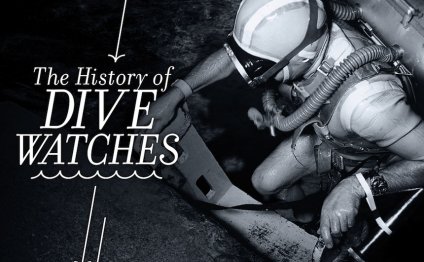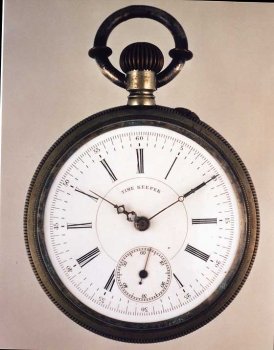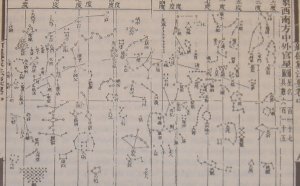
History of Seiko watches
 Those who know Seiko mainly for its lower-priced quartz watches — and even many who have recently discovered the Japanese brand’s high-horology Grand Seiko timepieces — may be unaware that Seiko’s history of watchmaking stretches all the way back to the late 19th century, and includes several watch-world firsts. Here are the highlights.
Those who know Seiko mainly for its lower-priced quartz watches — and even many who have recently discovered the Japanese brand’s high-horology Grand Seiko timepieces — may be unaware that Seiko’s history of watchmaking stretches all the way back to the late 19th century, and includes several watch-world firsts. Here are the highlights.
Seikosha Timekeeper (1895)
Seiko founder Kintaro Hattori was only 21 years old when he opened the K. Hattori watch and clock shop in Tokyo’s Kyobashi district and began building and repairing watches and clocks. He was only 31 when he partnered with an engineer named Tsuruhiko Yoshikawa to set up the Seikosha watch factory, forerunner of today’s Seiko, in 1892. After several years of producing high-quality wall clocks, Seikosha released its first pocketwatch, called simply the Timekeeper, in 1895. The 54.9-mm silver case was made in Japan, but most of the 22-ligne movement was imported from Switzerland. The English name “Timekeeper” was a product of Hattori’s shrewd business sense, as he realized that such a name would expand future export possibilities for the product.
 The Timekeeper by Seikosha (1895)
The Timekeeper by Seikosha (1895)
Laurel (1913)
Hattori quickly recognized the growing worldwide popularity of the wristwatch and predicted that the demand for wristwatches would shortly outpace that for pocketwatches. Hence the debut of the Laurel in 1913, just 11 years after the first Hattori wall clocks. The Laurel had a silver case, 29.6 mm in diameter, a porcelain enamel dial, and a 12-ligne movement. At first, the need to import components meant that production was slow — just 30 to 50 pieces per day — but by 1910, Seikosha had managed to produce its own balance springs and by 1913, its own enamel dials.
The Laurel by Seikosha — the first Japanese-made wristwatch
First Seiko Watch (1924)
The Great Kanto Earthquake struck Japan in 1923, destroying the Seikosha factory and stocks and halting production of timepieces. However, the determined Hattori decided to quickly rebuild, despite the massive costs, and only one year later the world was introduced to the very first watch with the name “Seiko” on the dial. (“Seiko” is, of course, an abbreviation of “Seikosha, ” which means, roughly, “House of Exquisite Workmanship” in Japanese.) The use of a non-English name indicated that Hattori had become confident enough in the quality of his products that they would sell despite the widely held belief (at the time) that products made in the West were of superior quality. The watch had a 24.2-mm case made of nickel and a 9-ligne, 7-jewel movement. Its small seconds subdial was standard all the way up until 1950, when the Seiko Super debuted as the first Japanese watch with a central seconds hand.
However, the determined Hattori decided to quickly rebuild, despite the massive costs, and only one year later the world was introduced to the very first watch with the name “Seiko” on the dial. (“Seiko” is, of course, an abbreviation of “Seikosha, ” which means, roughly, “House of Exquisite Workmanship” in Japanese.) The use of a non-English name indicated that Hattori had become confident enough in the quality of his products that they would sell despite the widely held belief (at the time) that products made in the West were of superior quality. The watch had a 24.2-mm case made of nickel and a 9-ligne, 7-jewel movement. Its small seconds subdial was standard all the way up until 1950, when the Seiko Super debuted as the first Japanese watch with a central seconds hand.
The first watch called “Seiko” debuted in 1924.
Seiko Marvel (1956)
Seiko considers the Seiko Marvel to be an epoch-making watch in its history, as it is the first Seiko watch whose movement was designed “fully in-house from scratch” — i.e., not influenced by other watch movements made in Switzerland or elsewhere. The movement diameter (26 mm) was larger than that of the Seiko Super (and matched the dimensions of the Seiko Automatic, which debuted the same year and is notable for being Japan’s first automatic wristwatch). It’s accuracy and stability, which incorporated a new Seiko invention, the “Diashock” shock absorption system, was far superior to that of its predecessors as well as that of other Japanese watches of that era. The Seiko Marvel was produced until 1959, when it was superseded by the Seiko Gyro Marvel, which had a new automatic movement with Seiko’s “Magic Lever” mechanism that increased the winding efficiency.
See also:
RELATED VIDEO


Share this Post
Related posts
History of mechanical clocks
There are all sorts of resonances around us, in the world, in our culture, and in our technology. A tidal resonance causes…
Read MoreHistory of Tissot watches
Die Firma Tissot, die Mitte des neunzehnten Jahrhunderts in dem kleinen Ort Le Locle, einer der Geburtsstätten der Schweizer…
Read More










